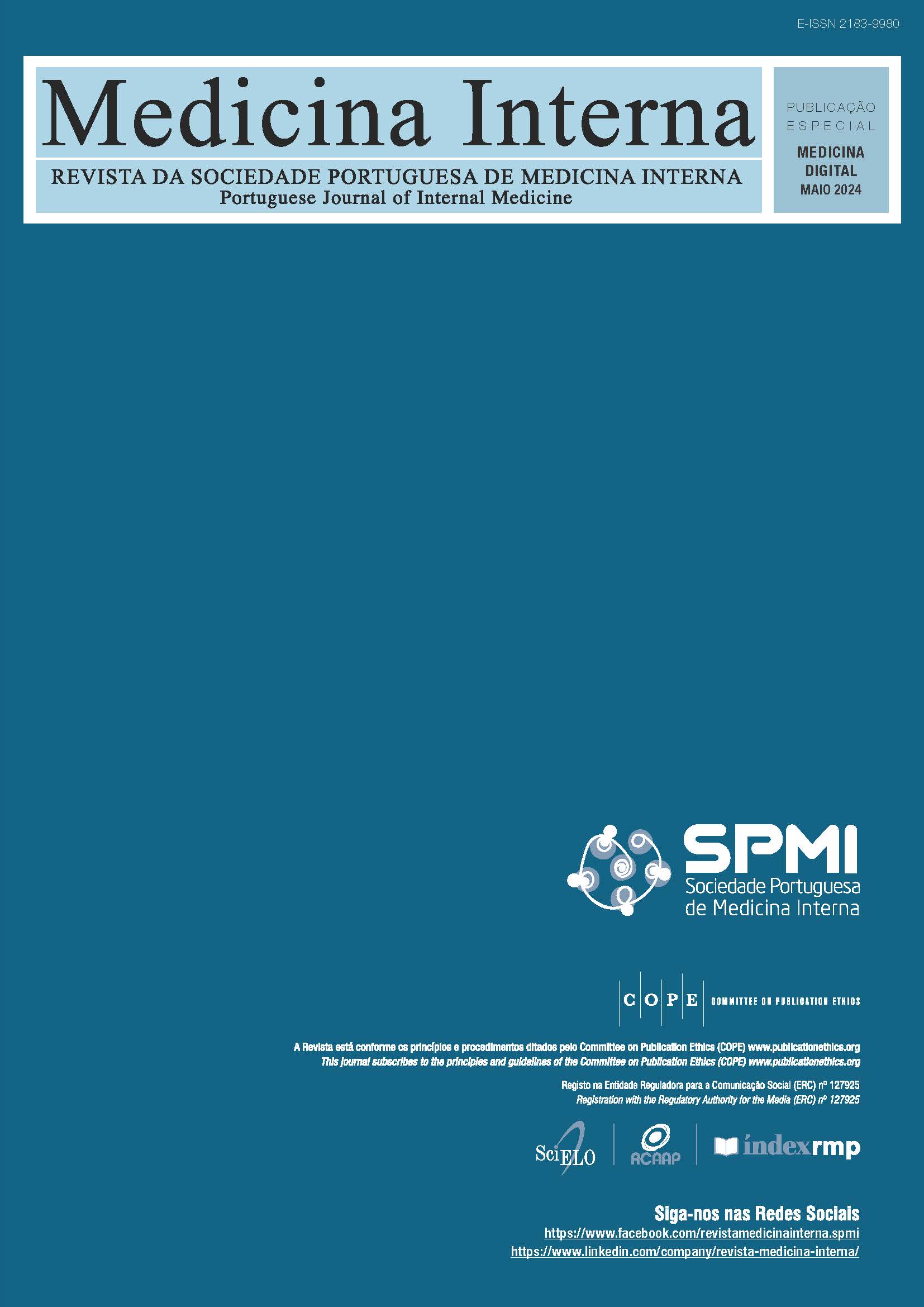Artificial Intelligence and Ultrasonography
DOI:
https://doi.org/10.24950/rspmi.2585Keywords:
Artificial Intelligence, Deep Learning, Internal Medicine, Machine Learning, Point-of-Care Systems, UltrasonographyAbstract
Artificial intelligence (AI) and its many aliases, including machine learning, deep learning and big data, have invaded modern medicine impacting most aspects of modern practice. One of the most controversial and potentially impactful, is artificial intelligence use in medical imaging. While most commercial and academic attention has focused on higher cost imaging modalities such as magnetic imaging resonance (MRI) and computed tomography (CT), ultrasound has also become the target of AI application developers. Ultrasound presents additional barriers to AI application development and execution, not seen in axial imaging such as MRI and CT. Point-of-care ultrasound (POCUS), with its lack of standardization and plethora of inexperienced users, poses the greatest imaging challenge to AI. However, POCUS is also the key to widespread access to diagnostic and interventional ultrasound at the patient’s bedside throughout the world. This article discusses AI, it utilization in POCUS, current challenges, risks, limitations, needs and future possibilities.
Downloads
References
Díaz-Gómez JL, Mayo PH, Koenig SJ. Point-of-Care Ultrasonography. N Engl J Med. 2021;385:1593-602. doi: 10.1056/NEJMra1916062.
Spencer KT, Kimura BJ, Korcarz CE, Pellikka PA, Rahko PS, Siegel RJ. Focused cardiac ultrasound: recommendations from the American Society of Echocardiography. J Am Soc Echocardiogr. 2013;26:567-81. doi: 10.1016/j.echo.2013.04.001.
Plummer D, Brunette D, Asinger R, Ruiz E. Emergency department echocardiography improves outcome in penetrating cardiac injury. Ann Emerg Med. 1992;21:709-12. doi: 10.1016/s0196-0644(05)82784-2.
Michalke JA. An overview of emergency ultrasound in the United States. World J Emerg Med. 2012;3:85-90. doi: 10.5847/wjem.j.is
sn.1920-8642.2012.02.001.
Wong J, Montague S, Wallace P, Negishi K, Liteplo A, Ringrose J, et al. Barriers to learning and using point-of-care ultrasound: a survey of practicing internists in six North American institutions. Ultrasound J. 2020;12:19. doi: 10.1186/s13089-020-00167-6.
Ludden-Schlatter A, Kruse RL, Mahan R, Stephens L. Point-of-Care Ultrasound Attitudes, Barriers, and Current Use Among Family Medicine Residents and Practicing Physicians. PRiMER. 2023 ;7:13. doi: 10.22454/ PRiMER.2023.967474.
Galen B, Conigliaro R. A Curriculum for Lumbar Puncture Training in Internal Medicine Residency. MedEdPublish. 2019;26;8:33. doi: 10.15694/mep.2019.000033.1.
Blehar DJ, Barton B, Gaspari RJ. Learning curves in emergency ultrasound education. Acad Emerg Med. 2015;22:574-82. doi: 10.1111/acem.12653.
Malik AN, Rowland J, Haber BD, Thom S, Jackson B, Volk B, et al. The Use of Handheld Ultrasound Devices in Emergency Medicine. Curr Emerg Hosp Med Rep. 2021;9:73-81. doi: 10.1007/s40138-021-00229-6.
Wang H, Uraco AM, Hughes J. Artificial Intelligence Application on Point-of-Care Ultrasound. J Cardiothorac Vasc Anesth. 2021;35:3451-2. doi: 10.1053/j.jvca.2021.02.064.
Erickson BJ, Korfiatis P, Akkus Z, Kline TL. Machine Learning for Medical Imaging. Radiographics. 2017;37:505-15. doi: 10.1148/rg.2017160130.
Borys K, Schmitt YA, Nauta M, Seifert C, Krämer N, Friedrich CM, et al. Explainable AI in medical imaging: An overview for clinical practitioners -Beyond saliency-based XAI approaches. Eur J Radiol. 2023;162:110786. doi: 10.1016/j.ejrad.2023.110786.
Park SH. Artificial intelligence for ultrasonography: unique opportunities and challenges. Ultrasonography. 2021;40:3-6. doi: 10.14366/usg.20078
Blaivas M, Brannam L, Fernandez E. Short-axis versus long-axis approaches for teaching ultrasound-guided vascular access on a new inanimate model. Acad Emerg Med. 2003;10:1307-11. doi: 10.1111/j.1553-2712.2003. tb00002.x.
Blaivas M, Adhikari S. An unseen danger: frequency of posterior vessel wall penetration by needles during attempts to place internal jugular vein central catheters using ultrasound guidance. Crit Care Med. 2009;37:2345-9; quiz 2359. doi: 10.1097/CCM.0b013e3181a067d4.
Lloyd J, Morse R, Taylor A, Phillips D, Higham H, Burckett-St Laurent D, et al. Artificial Intelligence: Innovation to Assist in the Identification of Sono-anatomy for Ultrasound-Guided Regional Anaesthesia. Adv Exp Med Biol. 2022;1356:117-40. doi: 10.1007/978-3-030-87779-8_6.
Blaivas M, Arntfield R, White M. DIY AI, deep learning network development for automated image classification in a point-of-care ultrasound quality assurance program. J Am Coll Emerg Physicians Open. 2020;1:124-31. doi: 10.1002/emp2.12018.
Russell FM, Ehrman RR, Barton A, Sarmiento E, Ottenhoff JE, Nti BK. B-line quantification: comparing learners novice to lung ultrasound assisted by machine artificial intelligence technology to expert review. Ultrasound J. 2021;13:33. doi: 10.1186/s13089-021-00234-6.
Wrenn KD, Slovis CM. Misguided residency applicant questions? Acad Emerg Med. 1999;6:981-3. doi: 10.1111/j.1553 2712.1999.tb01178.x.
Aziz MF, Berkow L. Pro-Con Debate: Videolaryngoscopy Should Be Standard of Care for Tracheal Intubation. Anesth Analg. 2023;136:683-8. doi: 10.1213/ANE.0000000000006252.
Lichtenstein D. Clinical ultrasound in the age of artificial intelligence. Health Manag J. 2019; 19:154-6.
Work With New Electronic 'Brains' Opens Field For Army Math Experts. Hammond Times. 1957; 65.
Food and Drug Administration. Class 2 Device Recall Vscan Extend [accessed Jan 2024] Available at: https://www.accessdata.fda.gov/scripts/cdrh/cfdocs/cfRes/res.cfm?ID=173162
Blaivas M, Pawl R. Analysis of lawsuits filed against emergency physicians for point-of-care emergency ultrasound examination performance and interpretation over a 20-year period. Am J Emerg Med. 2012;30:338-41. doi: 10.1016/j.ajem.2010.12.016.
Stolz L, O'Brien KM, Miller ML, Winters-Brown ND, Blaivas M, Adhikari S. A review of lawsuits related to point-of-care emergency ultrasound applications. West J Emerg Med. 2015;16:1-4. doi: 10.5811/westjem.2014.11.23592.
Downloads
Published
How to Cite
Issue
Section
License
Copyright (c) 2024 Internal Medicine

This work is licensed under a Creative Commons Attribution 4.0 International License.
Copyright (c) 2023 Medicina Interna






